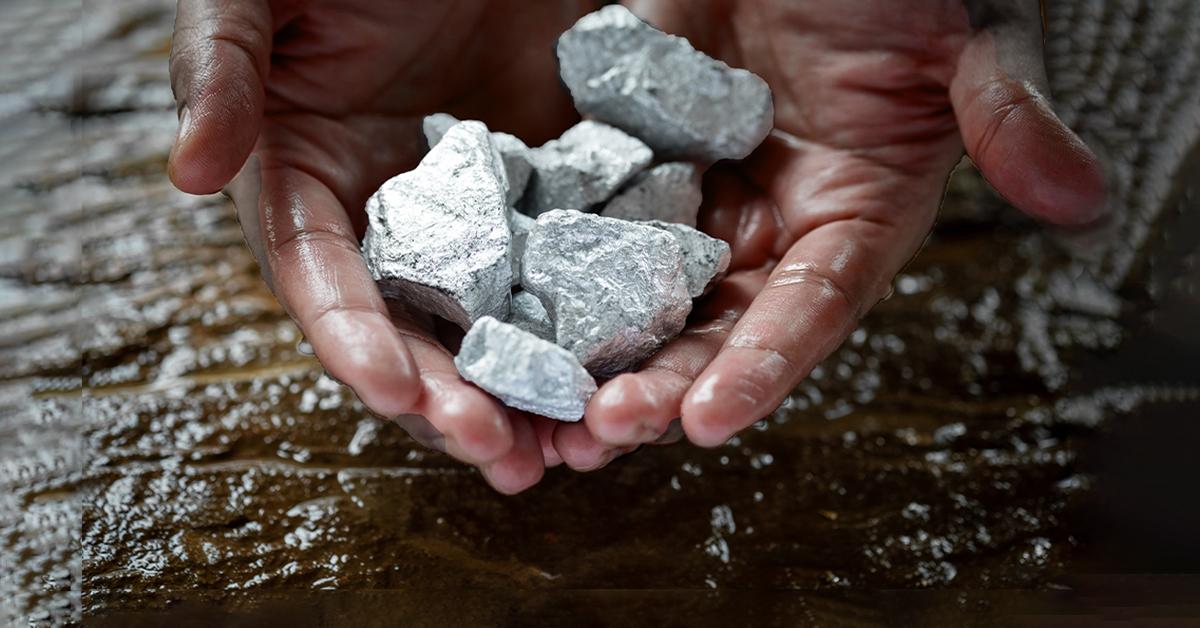People Behind Purpose at Cisco: In the Supply Chain, Where It’s Sourced Matters
By Shelley D. Harper
Published 05-04-23
Submitted by Cisco Systems, Inc.

This blog is part of our People Behind Purpose at Cisco series that focuses on employees driving Cisco’s purpose to Power an Inclusive Future for All. Each blog highlights a different Cisco employee whose work positively impacts people, communities, or the planet. The series was formerly known as people behind Corporate Social Responsibility (CSR) at Cisco.
Where the materials in a company’s supply chain come from matters; to customers, to global communities, and to us at Cisco. Cisco´s purpose is to Power an Inclusive Future for All. We have a long-standing commitment to uphold and respect the human rights of all people, wherever we operate, including those who work in our supply chain. Our dedication to human rights is embedded in our due diligence system, which is consistent with our Global Human Rights Policy, the United Nations Guiding Principles on Business and Human Rights (UNGPs), and the Organisation for Economic Co-operation and Development (OECD) Due Diligence Guidelines for Responsible Business Conduct.
That’s why Cisco employee Chrysantha Davis, project specialist for responsible sourcing on Cisco’s Supply Chain Sustainability team, dedicates herself to supporting our suppliers’ consistency across our supply chain in regard to our policies and standards for ethical and responsible sourcing of minerals.
Here’s what you should know about Chrysantha and the critical work she does at Cisco.
Q: How did an internship at Cisco lead to your current position?
Chrysantha: In college, I studied a curriculum with a lot of touchpoints on sustainability. After graduating, I accepted an internship on Cisco’s Global Manufacturing Operations team at a time when internship opportunities in the sustainability field were still limited but growing. During that time, I entered a Cisco Supply Chain case study competition with a project on recycled tin, having no idea that one day I would segue into the minerals space. I have always had an interest in sustainability, and through working on my project, I gained a lot of exposure to sustainability at Cisco, and specifically to the work the Supply Chain Sustainability team does.
Later on, I applied for a position as Project Specialist on the team, which I’ve been in for a little over two and a half years. In my current role, I manage the due diligence of our Responsible Minerals program, specifically for sourcing “3TG” — tantalum, tin, tungsten, and gold — found in Cisco’s hardware products. I engage with our suppliers across the supply chain and work with them to source minerals in a manner consistent with our values around human rights, business ethics, labor, health and safety practices, and environmental responsibility.
Q: When suppliers do not meet Cisco’s expectations, why does Cisco prefer to work with them to improve performance, rather than seek out other suppliers?
Chrysantha: Minerals are essential to manufacturing our products, and so is upholding our Responsible Minerals Policy, which requires our suppliers to source 3TG and cobalt from smelters and refiners that conform to an audit assurance process. We want them to understand the importance of practicing responsible sourcing, as well as the benefits to them. If we immediately switched suppliers instead of working with them, they might not improve their performance.
Having good relationships with suppliers matters, and since I’ve been on board, we’ve been able to work with them successfully to switch to alternative sourcing as necessary.
Q: How does Cisco leverage industry and other stakeholder groups?
Chrysantha: In addition to exercising leverage directly with our suppliers, we also collaborate with industry peers. Cisco has been a member of the Responsible Business Alliance (RBA) since April 2008, and is a participant in RBA’s Responsible Materials Initiative (RMI). The RMI is a collaborative forum and provides tools and resources to Cisco and peer companies to move forward as an industry vis-à-vis responsible sourcing in the minerals space.
The Cisco Supply Chain Sustainability team utilizes the Conflict Minerals Reporting template (CMRT), a standardized survey template RMI provides without charge. We use this survey when onboarding a new supplier to help determine whether smelters or refiners in their supply chain can pose risk. We also require hardware suppliers across our supply chain to complete an updated CMRT annually. If a supplier reports smelters that are not conformant to a third-party audit scheme, we work directly with them to help switch to alternative sourcing.
Other organizations we work closely with include the European Partnership for Responsible Minerals, whose Scalable Trade in Artisanal Gold project focuses on establishing a commercially viable pathway to selling responsibly sourced artisanal gold. And as mentioned previously, there’s also the OECD, an intergovernmental agency, some of whose guiding principles on human rights and environmental sustainability are incorporated into Cisco’s Responsible Minerals Policy.
Q: What are some of the challenges you face in your day-to-day work?
Chrysantha: Reviewing and interpreting new regulations and requirements from a range of stakeholders (e.g. customers, partners, investors, governments) before they take effect.
We make sure our suppliers provide us with their most current information, such as changes to a smelter’s status, which may impact dozens of our suppliers. We must also stay in close communication with the RMI, which has monthly sessions to announce upcoming changes to conformance listings.
Q: What can you share about working collaboratively with other Cisco internal organizations to integrate risk mitigation into operations?
Chrysantha: The Cisco Global Supplier Management team owns the relationship with our suppliers, so we work very closely with them to help keep them informed on current compliance guidelines and issues, which in turn they can communicate to suppliers.
We also work closely with the Cisco Business and Human Rights and Government Affairs teams regarding new guidelines and regulations that can impact our supply chain operations.
Q: Where do you find your purpose in doing your day-to-day work?
Chrysantha: I find purpose in knowing that my team is doing what we can to positively impact the lives of the people and communities in our supply chain. Also, being surrounded by thoughtful and passionate people helps me stay motivated and is a great reminder we are all trying to accomplish the same goal.
Q: Do you have any specific advice for anyone interested in a career in responsible sourcing for a supply chain?
Chrysantha: There may be a perception that the sustainability field is a challenging career choice, and I think in some ways it can be. But, as I mentioned earlier, this is my first job out of college, and I’ve been able to learn a lot from my team by just performing my job. Opportunities in sustainability are growing tremendously right now. It doesn’t matter at what point in your career you get into this field; sustainability is a space that can be accessible to everyone.
For those still in college, internships are a great way to dip your toes into this field. As an intern, I had the opportunity to grow my network within my team and learn more about what Cisco is doing in sustainability. If you’re already at a company with a sustainability program and want to get involved doing that work, consider taking on a sustainability stretch assignment, a project that challenges you to go beyond what you already know or your skill level.
Cisco is actively recruiting for its Supply Chain group. For more information, visit Cisco Careers.
Learn more about Cisco’s long-standing commitment to human rights in the supply chain at Cisco´s environmental, social, and governance (ESG) Reporting Hub and by reading our calendar year 2021 Cisco conflict minerals report.
You can find People Behind Purpose and other Cisco Corporate Social Responsibility blogs at https://blogs.cisco.com/csr.
View original content here

Cisco Systems, Inc.
Cisco Systems, Inc.
About Cisco
Cisco (NASDAQ: CSCO) is the worldwide leader in technology that powers the internet. Cisco inspires new possibilities by reimagining your applications, securing your data, transforming your infrastructure, and empowering your teams for a global and inclusive future. Discover more on The Network and follow us on Twitter.
About Cisco's Purpose
Cisco’s purpose is to Power an Inclusive Future for All. From increasing access to skills needed to thrive in a digital economy to supporting the most vulnerable in times of crisis, we’re committed to using our technology for good. Cisco is also leveraging our scale and innovation to help ensure that our increasingly digital future is sustainable, inclusive, and resilient.
More from Cisco Systems, Inc.

